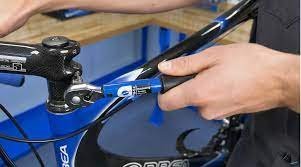Torque Wrench Calibration: Why It's Essential and How to Do It Right:
Torque wrenches are indispensable tools in various industries, from automotive to aerospace, where precision tightening of fasteners is crucial. However, to ensure accurate torque application, regular calibration of torque wrenches is essential. In this article, we delve into why torque wrench calibration is vital and provide insights into the correct calibration procedure.

Understanding Torque Wrench Calibration:
Before delving into the calibration process, it's crucial to understand what torque wrench calibration entails. Torque wrench calibration refers to the process of adjusting and verifying the accuracy of a torque wrench to ensure it delivers the correct torque output as specified by the manufacturer. Over time, due to usage, environmental factors, and wear and tear, torque wrenches can drift from their original calibration, leading to inaccurate torque application.
Importance of Torque Wrench Calibration:
Calibrating torque wrenches at regular intervals is essential for several reasons. Firstly, accurate torque application is vital to ensure the integrity and safety of assemblies. Over or under-tightening fasteners can result in structural failures, compromised safety, and costly rework. Secondly, adherence to industry standards and regulations often requires torque wrenches to be calibrated regularly. Failure to comply with these standards can lead to legal implications and loss of credibility. Moreover, calibrated torque wrenches contribute to improved product quality and reliability by ensuring consistent tightening of fasteners, thus reducing the likelihood of defects and failures.
Factors Affecting Torque Wrench Calibration:
Several factors can affect the calibration of torque wrenches. Environmental conditions such as temperature, humidity, and altitude can influence the performance of torque wrenches. Additionally, factors like usage frequency, torque range, and maintenance practices can impact calibration accuracy. It's essential to consider these factors when establishing a calibration schedule and procedure.
Calibration Procedure:
Calibrating a torque wrench involves several steps to ensure accuracy and reliability. Here's a basic outline of the calibration procedure:
Inspection:
Begin by visually inspecting the torque wrench for any signs of damage or wear. Check the handle, scale, and mechanism for any abnormalities.
Zero Calibration:
Set the torque wrench to its lowest setting (usually zero) and ensure that the reading aligns with the reference point. If there's any discrepancy, adjust the torque wrench accordingly.
Calibration Testing:
Use a calibrated torque tester or a load cell to apply known torque values to the torque wrench across its operating range. Compare the readings obtained from the torque wrench with the applied torque values. Adjust the torque wrench as necessary to minimize any deviation.
Repeatability Testing:
Perform multiple tests at the same torque value to assess the repeatability of the torque wrench. The readings should be consistent within an acceptable tolerance range.
Documentation:
Record all calibration data, including before and after adjustments, as well as any deviations observed during testing. Maintain a calibration log for each torque wrench to track its performance over time.
Certification:
Upon successful calibration, issue a calibration certificate indicating the date of calibration, technician's name, calibration results, and any adjustments made. This certificate serves as proof of compliance with calibration standards and can be provided to regulatory authorities or clients as required.
Final Thoughts:
In conclusion, torque wrench calibration is a critical aspect of maintenance and quality assurance in various industries. By ensuring the accuracy of torque wrenches, organizations can uphold safety standards, meet regulatory requirements, and enhance product quality. Following a systematic calibration procedure and adhering to recommended calibration intervals are essential practices to maintain the reliability and effectiveness of torque wrenches. Remember, accurate torque application starts with properly calibrated torque wrenches.
Whether in automotive, manufacturing, or construction, the significance of torque wrench calibration cannot be overstated. It's not just about tightening bolts; it's about precision, safety, and reliability. So, next time you reach for a torque wrench, ensure it's properly calibrated to deliver the torque you need, right when you need it.
What's Your Reaction?









![Wireless Connectivity Software Market Size, Share | Statistics [2032]](https://handyclassified.com/uploads/images/202404/image_100x75_661f3be896033.jpg)


